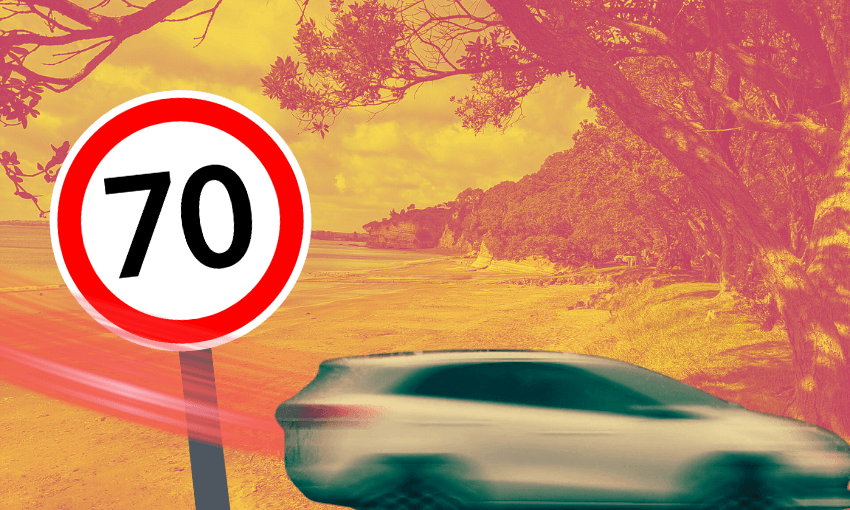Speed limits are being increased on 1,500 Auckland streets, many neighbouring schools, after a council objection failed to sway the government.
Auckland Transport has released a list of 1,500 residential Auckland streets, many near schools, where speed limits are increasing by order of the Ministry of Transport.
Last year, the ministry set a new land transport rule requiring NZTA/Waka Kotahi and local councils to reverse all speed limits lowered since January 2020 by the beginning of July this year. For Auckland Transport (AT), it applies to “urban connectors”, which will be lifted from 50km to 60km by March 30, as well as to streets where permanent 30km-per-hour speed limits were introduced because there was a school in the area. These latter speed limits will now apply only for brief periods at the start and end of the school day, a move that will require extensive changes to signage and will be completed by July 1.
An AT interactive map shows the impact the directive will have across the supercity, with 1,540 streets and 152 schools affected. Many are in busy residential neighbourhoods comprising narrow, heavily parked-up streets, in suburbs including Ponsonby, Eden Terrace, Point Chevalier, Waterview, Mt Eden, Balmoral, Sandringham, Mt Albert, Blockhouse Bay and Avondale in the central west; Parnell, Stonefields, Meadowbank and Glen Innes in the inner east; Stanley Bay, Belmont, Hauraki, Murrays Bay and Albany on the North Shore; Kelston, Te Atatū South, Lincoln and Rānui out west; and Māngere, Māngere Bridge, Otāhūhū, Ōtara and Manurewa in the south; and Pakuranga, Mellons Bay and Cockle Bay out east.
An update presented to the AT board on February 25 by road safety programme director Andrew Garratt and proactively released on AT’s website reveals that the programme of work to carry out the speed limit reversals will likely cost $8.8 million, which was not budgeted in the Regional Land Transport Plan. NZTA has indicated it will contribute 51% of the cost, said the update.
In July last year, Auckland Council formally opposed the speed limit reversals proposed by the government, with transport and infrastructure committee chair John Watson telling RNZ there had been a reduction in injuries and death in places where speed limits had been lowered. “The council was definitely coming down quite clearly on the side of real safety,” he said.
Garrett’s update to the AT board this week highlighted risks associated with the programme of speed reversals. “We will monitor and report on actual DSI [death and serious injury] impacts and will identify corrective measures, if needed, in partnership with local boards and communities,” it said. “Given polarised views within the community on speed, there are reputation risks for AT. We will endeavour to mitigate these through the way we engage and inform council, local board and communities particularly schools of what roads are changing and when.” Other risks highlighted were “the cost of the project, the number of roads affected, the short timeframe to implement the speed limit changes and potential infrastructure risk on the network”.
The update also suggested that road controlling authorities (councils or council-controlled transport bodies) in other parts of the country managed to avoid the Ministry of Transport directive by deeming that their 30km/h zones were not set for school-related reasons, aside from the short lengths outside the school gates. “The approach used by other RCAs cannot be applied because the public consultations clearly indicated that the location of a school was the reason for the change [in Auckland],” said the update.
The estimated cost of $8.8 million is not broken down in the update, and it’s not clear why this has decreased from an earlier estimate of $25 million. A briefing to Brown from NZTA in September 2024 said that “changes to speed signs will come with costs such as procuring new signs, installation, temporary traffic management, and project management”.
The former transport minister welcomed the news from Auckland Transport in a tweet today, while current transport minister Chris Bishop is yet to comment.
Great news for Auckland today! Auckland Transport has now confirmed where Labour’s blanket speed limit reductions will be reversed as a result of our Government’s new sensible speed limit rule.
[1/4] pic.twitter.com/DGQyMAnIzP
— Simeon Brown (@SimeonBrownMP) February 27, 2025


